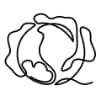← All Countries
Chile
Downloads
Resources
Use the following resources to conduct your own diet quality survey and analyze the results.
- DQQ translated into the national language(s) and in English

Chile
Required citation for use of the country-adapted DQQ or IYCF DQQ:
Global Diet Quality Project. Diet Quality Questionnaire (DQQ) for Chile. Accessed at dietquality.org on November 12, 2025.You are free to use the Diet Quality Questionnaires (DQQ), under the terms of the CC BY-NC-ND 4.0 license under which they are published. You must give appropriate credit, provide a link to the license, and indicate if changes were made during use. No derivatives or adaptations of the work are permitted, meaning you cannot distribute a modified form of the work.
- BY: Credit must be given to the creator.
- NC: Only noncommercial uses of the work are permitted.
- ND: No derivatives or adaptations of the work are permitted.
Required citation for use of the Required citation for use of the country-level results (for example, MDD-W prevalence in a country):
Global Diet Quality Project. 2024. “DQQ Results Dataset 2021-2024.” Harvard Dataverse. https://doi.org/doi:10.7910/DVN/KY3W8A. Accessed at dietquality.org on November 12, 2025.You are free to use the DQQ data, under the terms of the CC BY-NC-SA 4.0 license under which they are published. You must give appropriate credit, provide a link to the license, and indicate if changes were made.
- BY: Credit must be given to the creator.
- NC: Only noncommercial uses of the work are permitted.
- SA: Adaptations must be shared under the same terms.
Required citation for use of the Gallup World Poll microdata:
Global Diet Quality Project. 2024. “DQQ Microdata 2021-2024.” Harvard Dataverse. https://doi.org/doi:10.7910/DVN/PWWJSA.Indicators
Data collected Sep 20, 2021 – Jan 22, 2022
Minimum Dietary Diversity - Women (MDD-W)
89%
All-5
39%
Protective Food Consumption (PFC)
54%
Vegetables
93%
Fruits
82%
At least one whole grain, pulse, nut, or seed
64%
Unhealthy Food Consumption (UFC)
85%
Soft drinks (soda, energy drinks, sports drinks)
46%
More than one sugary food or beverage
78%
More than one salty ultra-processed food
29%
Processed meats
45%
Healthy Diet Pattern for prevention of chronic disease
7%
Zero vegetable or fruit consumption
3%
Dietary Diversity Score (DDS)
6.5
Starchy staple foods
96%
Whole grains
35%
Foods made from grains
82%
White roots, tubers, or plantains
59%
Pulses, nuts or seeds
47%
Pulses
33%
Nuts or seeds
25%
Vegetables
93%
Vitamin A-rich orange vegetables
71%
Dark green leafy vegetables
35%
Other vegetables
82%
Fruits
82%
Vitamin A-rich fruits
10%
Citrus
48%
Other fruits
73%
Animal-source foods
97%
Dairy
75%
Milk
38%
Yogurt
41%
Cheese
52%
Eggs
65%
Meat, poultry, or fish
88%
Fish or seafood
23%
Poultry
46%
Unprocessed red meat
50%
Unprocessed red meat (ruminants)
42%
Unprocessed red meat (non-ruminants)
18%
Fast food or instant noodles
16%
Salty or fried snacks
38%
Packaged ultra-processed salty snacks
21%
Instant noodles
10%
Fast food
9%
Deep fried foods
23%
Sweet foods
59%
Baked or grain-based sweets
47%
Other sweets
32%
Sweet beverages
92%
Soft drinks (soda, energy drinks, sports drinks)
46%
Sweet tea, coffee, or cocoa
76%
Fruit juice and fruit drinks
41%
% indicates percent of the population consuming in the previous day or night
